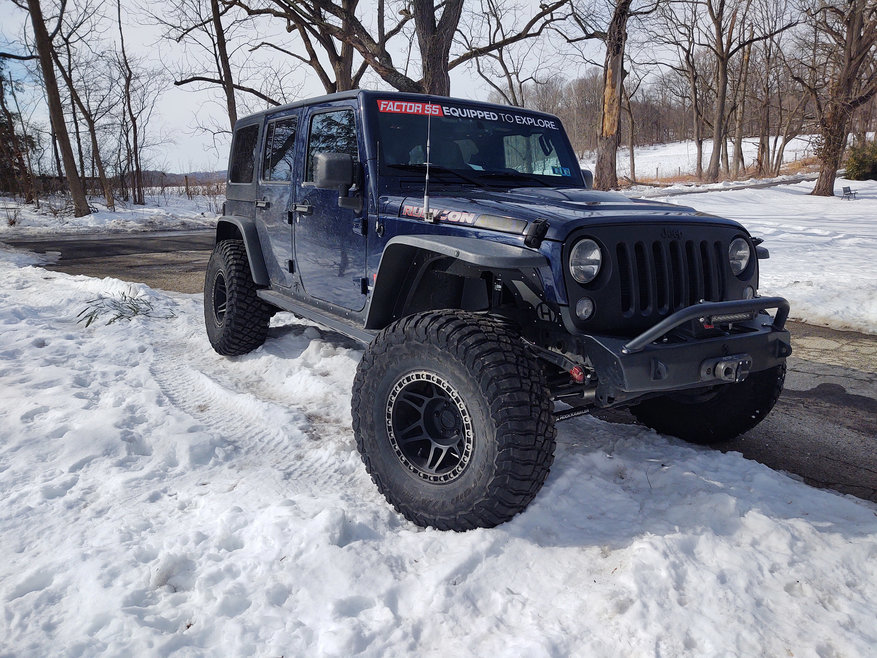by Scott Ammerman
Senior Torque Correspondent
Part Two of Two
Snow and ice storms have been particularly brutal lately this year, and the winter fury is certainly not yet over. And when the icy grip of winter chokes roadways and leaves lesser vehicles in ditches and drifts, many Jeep owners across the country volunteer their time and vehicles to transport healthcare workers to medical facilities and hospitals.
If this sounds like something you want to do, then checking in with a local health network, or even an area Jeep club, is a great place to start. In addition to helping people get to work, you can also support anyone who can’t get around in this weather to do basic things. I have several older folks in my neighborhood, and I assist with their shopping needs when I’m the only one who can make it around.
A large part of taking on this extra responsibility is ensuring your vehicle is well-prepared to the task. Preventative maintenance before winter storms arrive is important, and we cover what you need to know in part one of this series. This is one of the best ways to make sure you won't be spending any time stuck yourself, potentially with a very important passenger. Another thing you should focus on is upgrading your equipment with items you may not have considered.
Here are three of my favorites.
Upgrade 1: Heated LED Headlamps
Before the widespread use of LED lighting technology, headlights that were iced up were not much of a consideration. That’s because halogen lights generate a lot of heat, and glass lenses hold onto that heat. This means ice and snow in a driving storm melt off easily instead of accumulating on lenses.
If you get the right kind of sleet or snow, that buildup can occur rather quickly. And this is what the front of my Jeep looked like after 20 minutes of highway driving while snow was falling:
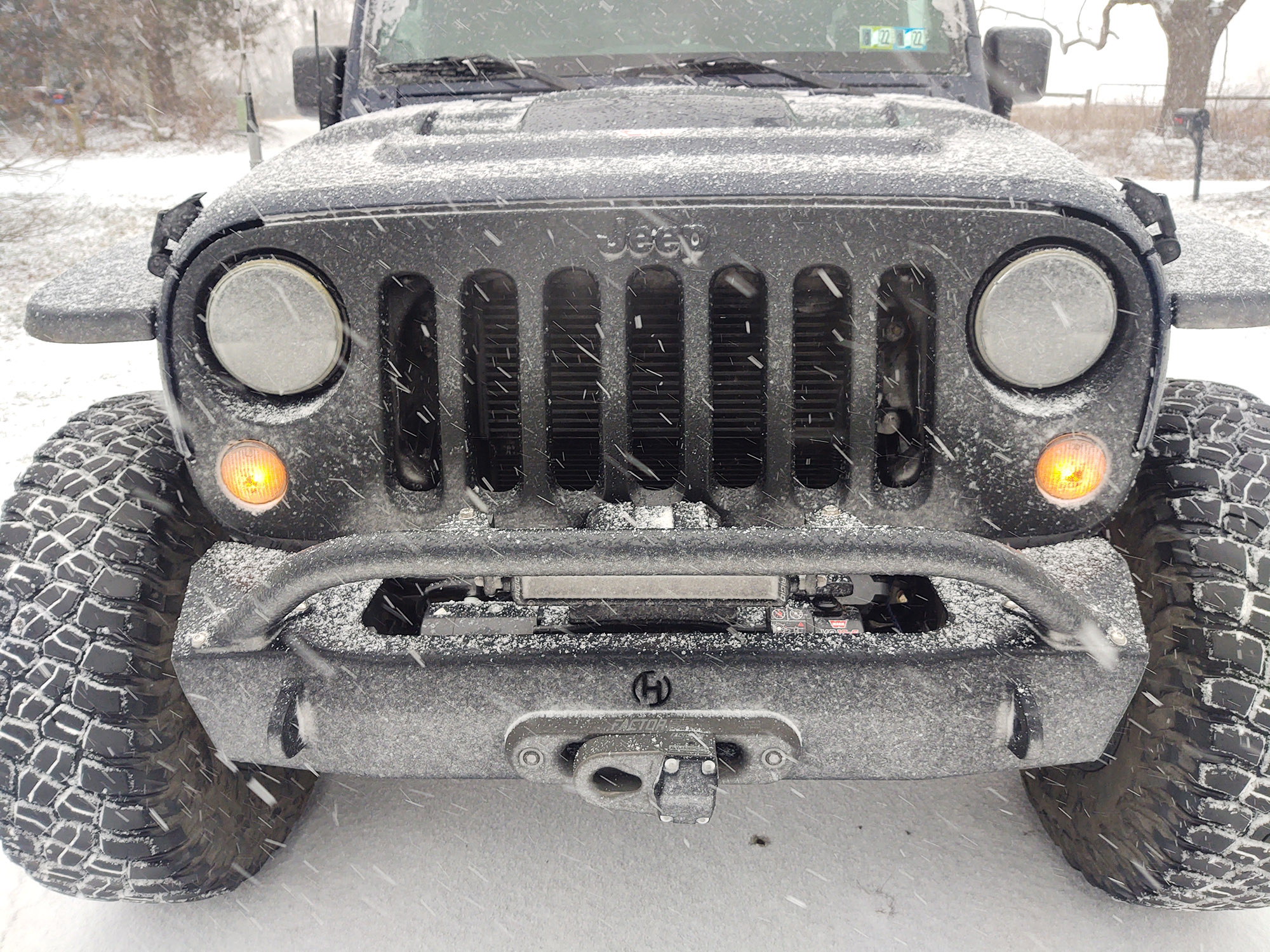
Standard LED headlamps simply do not generate enough heat to keep lenses clear. In the northeast, we have not had a difficult winter this year, but I went to the mountains quite a few times last year where this buildup became problematic.
Quadratec has partnered with J.W. Speaker to make a new line of premium projector-style heated LED headlights that cover many Jeep models. Not only are these made right here in the USA, but they are DOT certified as well — making them 50-state legal for use on your Jeep.
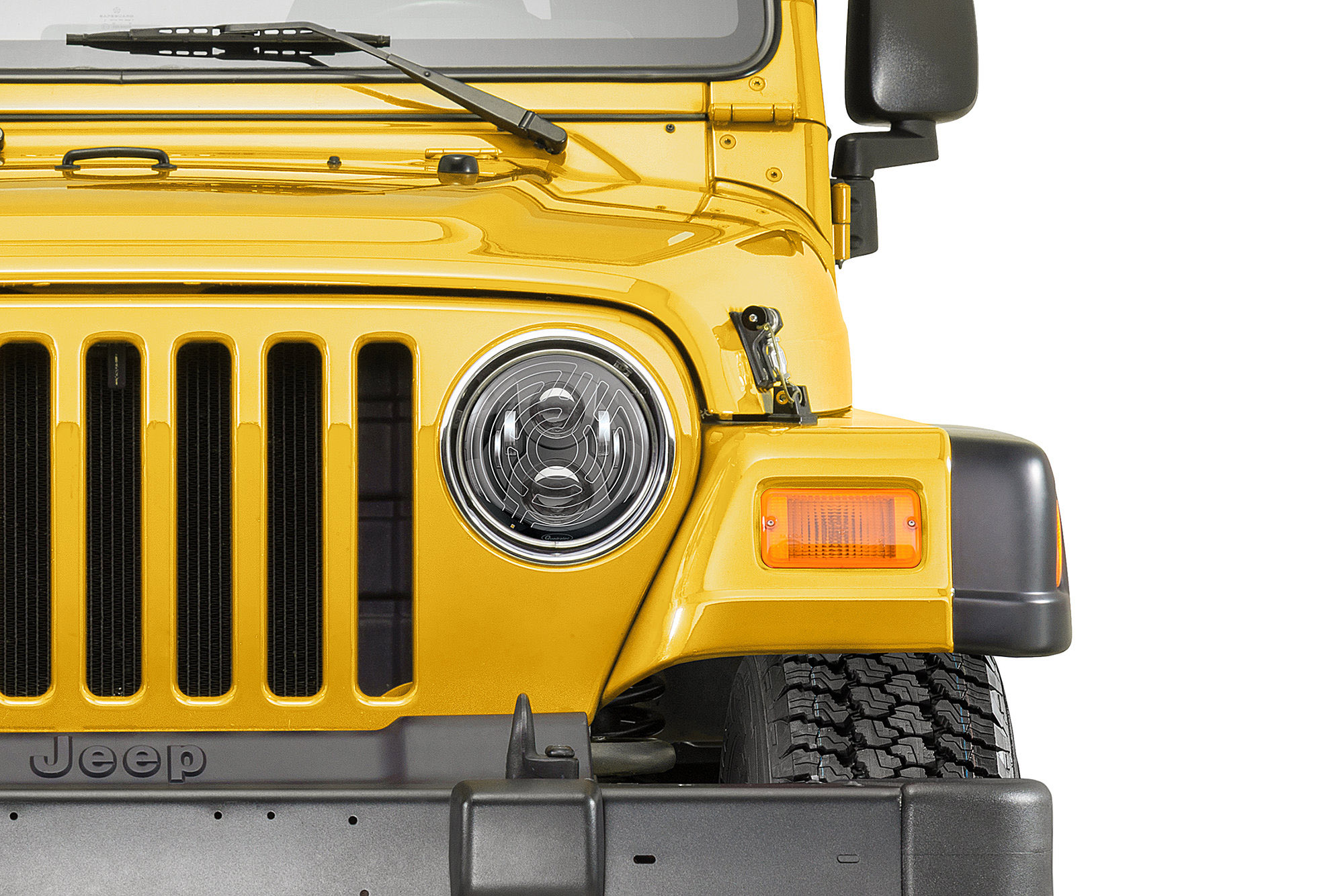
These headlamp units feature SmartHeat® LED light sensors in the headlight housing that automatically power up when temperatures drop below freezing, and then power off again once the frozen stuff has melted. This automatic system requires no additional switches or wiring to operate, so they are a fully plug-and-play solution. Even square lights are supported, so XJ and YJ drivers can have access to this new technology and superior lighting in either black or chrome bezel varieties.
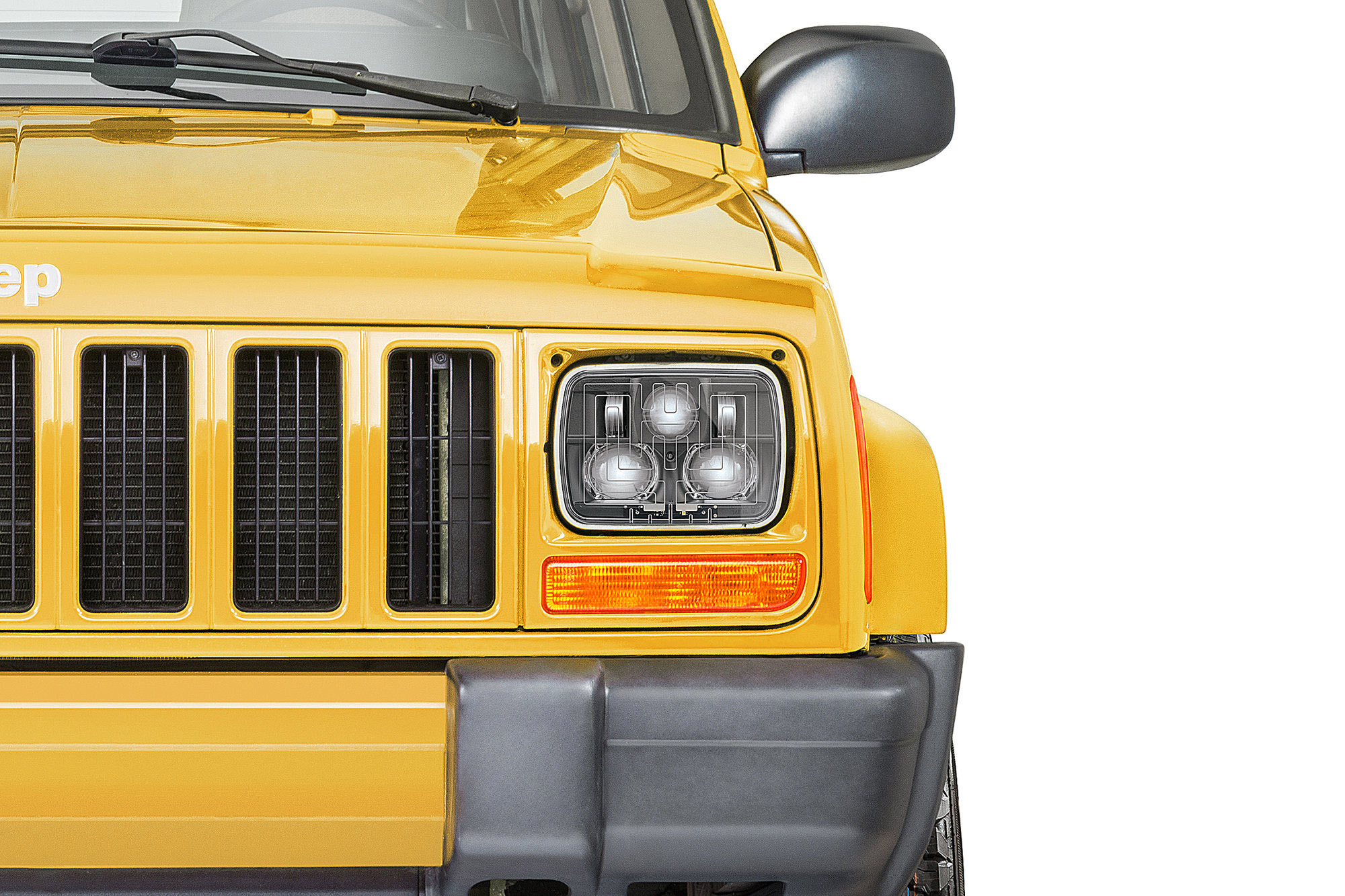
The versions for JK and the JL/JT include built-in circuitry to correct PWM power oscillation that can create headlight flicker, so your headlights will remain powerful and flicker-free.
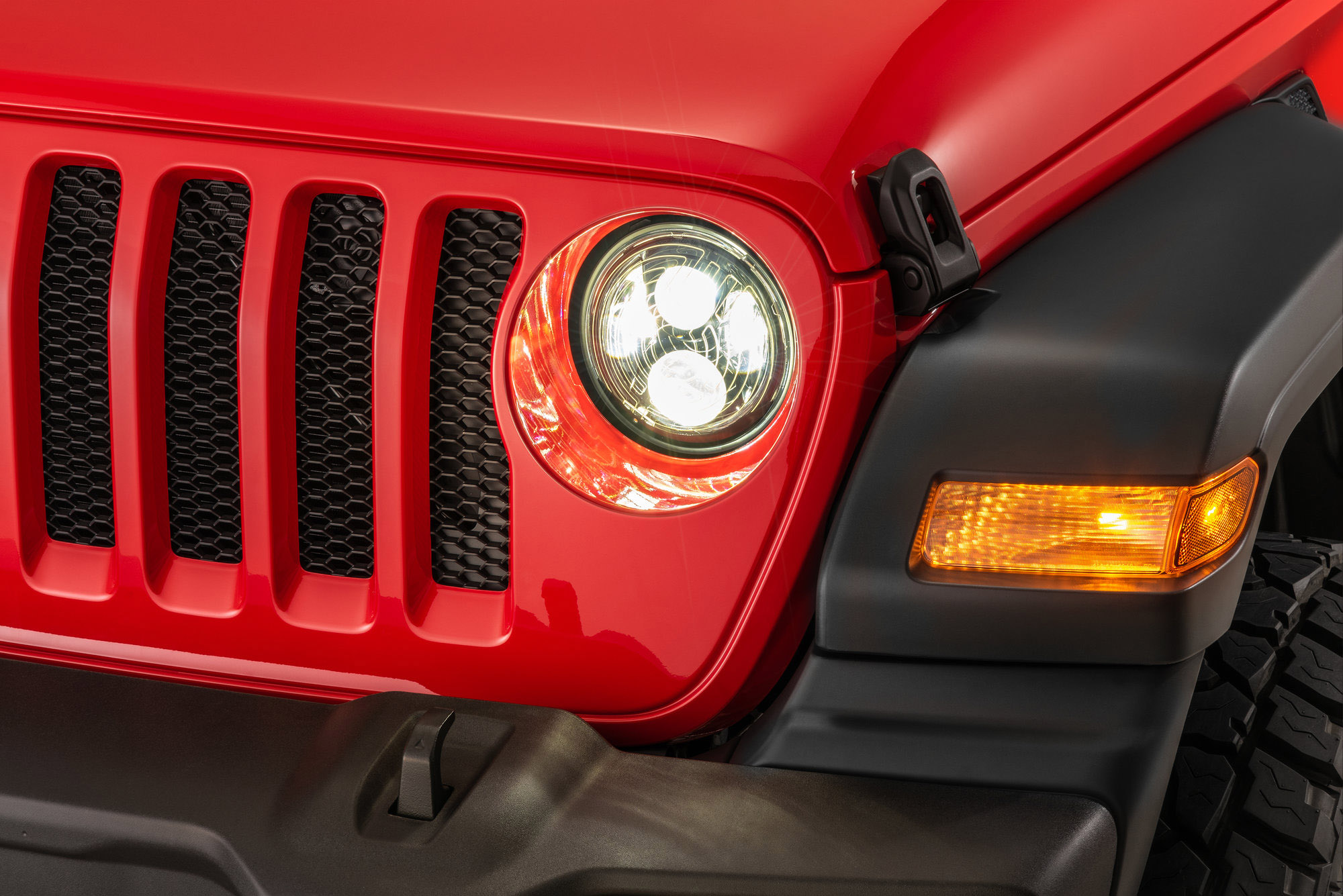
The added cost of heated LED headlights can be a factor, but if your region gets snow or ice storms, those few extra dollars are worth it to give you a heating option.
Upgrade 2: PIAA Winter Specific Wiper Blades
I have been a fan of PIAA silicone wiper blades for years. Even though I drive my Wrangler JK a lot, and in very dirty environments, PIAA’s 15-inch Super Silicone Wiper Blades have held up extremely well over the past few years.
![]()
Sure, they cost a little more than normal wiper blades, but the added durability is worth the price. I’ve recommended these to numerous people and one thing always remains constant — they tell me later that these are the best wiper blades they’ve ever used. PIAA utilizes premium silicone in the construction of these blades, and they hold up to the test of time and in all weather conditions.
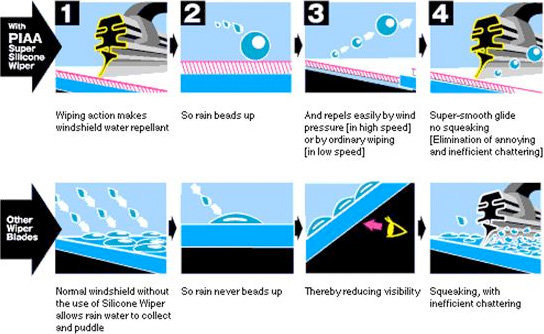
PIAA chooses silicone on these wipers to reduce surface tension of the water on your windshield glass, causing it to bead up like windshield treatment products — only that silicone on the glass doesn’t go away for a long time. In fact, I can not remember the last time I heard the annoying noise of wiper chatter across a dry windshield. It simply doesn’t happen with these wiper blades. So having a fresh set on your Jeep before winter sets in is never a bad idea. In the northeast, we have a lot of road salt buildup that hazes windshields for days after a minor storm, and these wipers really get a workout.
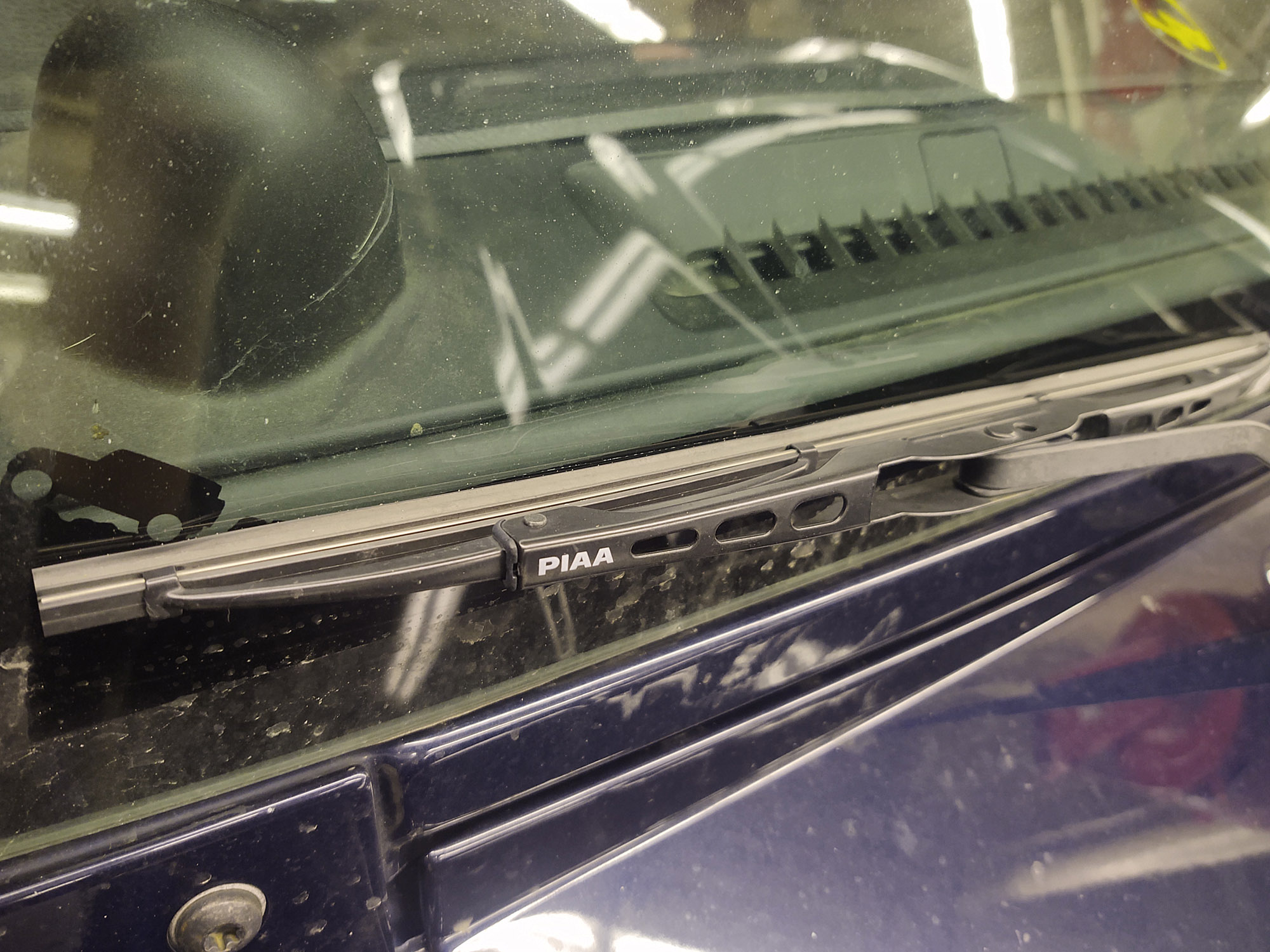
The ONLY complaint I have is a super minor one that is not exclusive to this wiper blade model or manufacturer — it is inherent to the design of traditional wiper blades in general. See, traditional blade frames pivot on the wiper arm, and then have other parts that pivot on the main frame of the blade that actually hold the wiper insert. A few times over the years, snow and ice has gotten stuck in these pivots, causing uneven clearing.
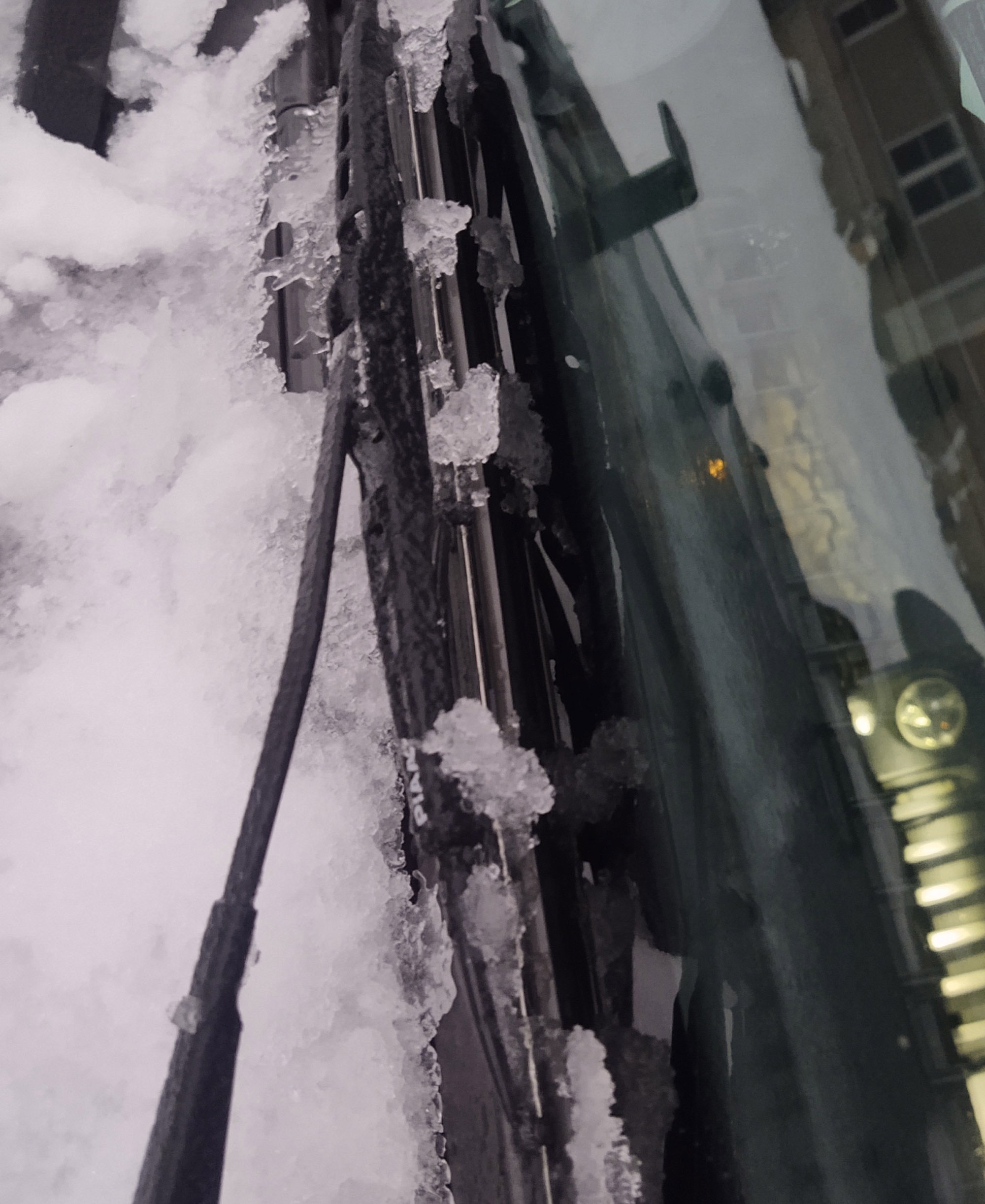
My PIAA wipers were last replaced over 3 years ago. I am only taking them off the Jeep now because the driver's side blade started streaking a bit. I mean, very, very little. Hardly worth replacing. In addition, my complaint that they caused uneven clearing with built-up ice was all within a three-day storm that saw chunks of ice forming on everything. What I did each time was pull over and clear it out by tapping it on the windshield.
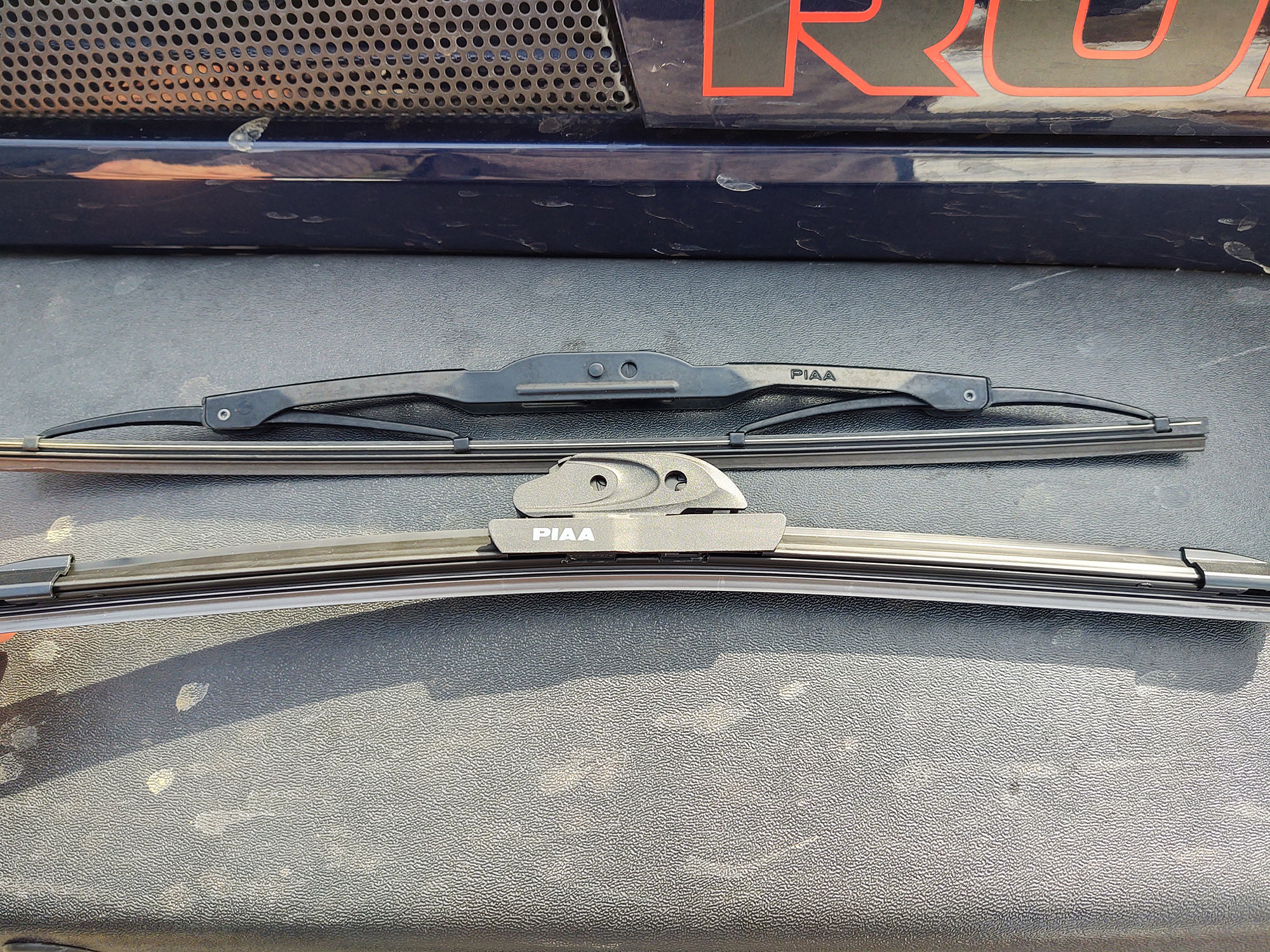
PIAA now manufactures a new blade that is pretty interesting - the Si-Tech Silicone wiper for Wrangler JK.
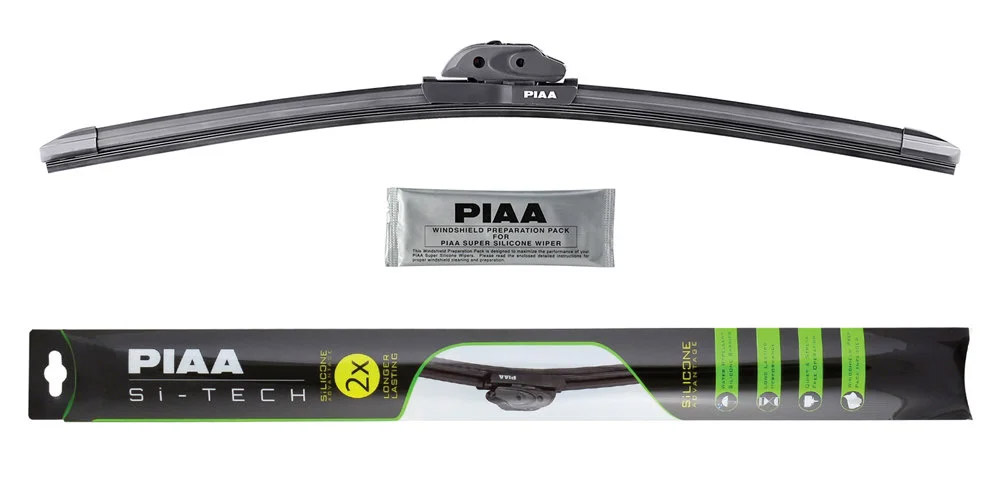
This one-piece blade is very similar to the ones found on my old Audi, which never had any issue icing up with debris. Of course, the only real drawback is that the inserts on these wipers are not replaceable. PIAA touts these models as a winter-specific solution, as the entire blade has equal pressure on the windshield without any additional mid-wiper pivots that can get jammed up.
Sure, these LOOK similar to offerings from a handful of other manufacturers, but those companies don’t use the same type of silicone technology as PIAA, so I wasn’t interested in compromising my brand loyalty.
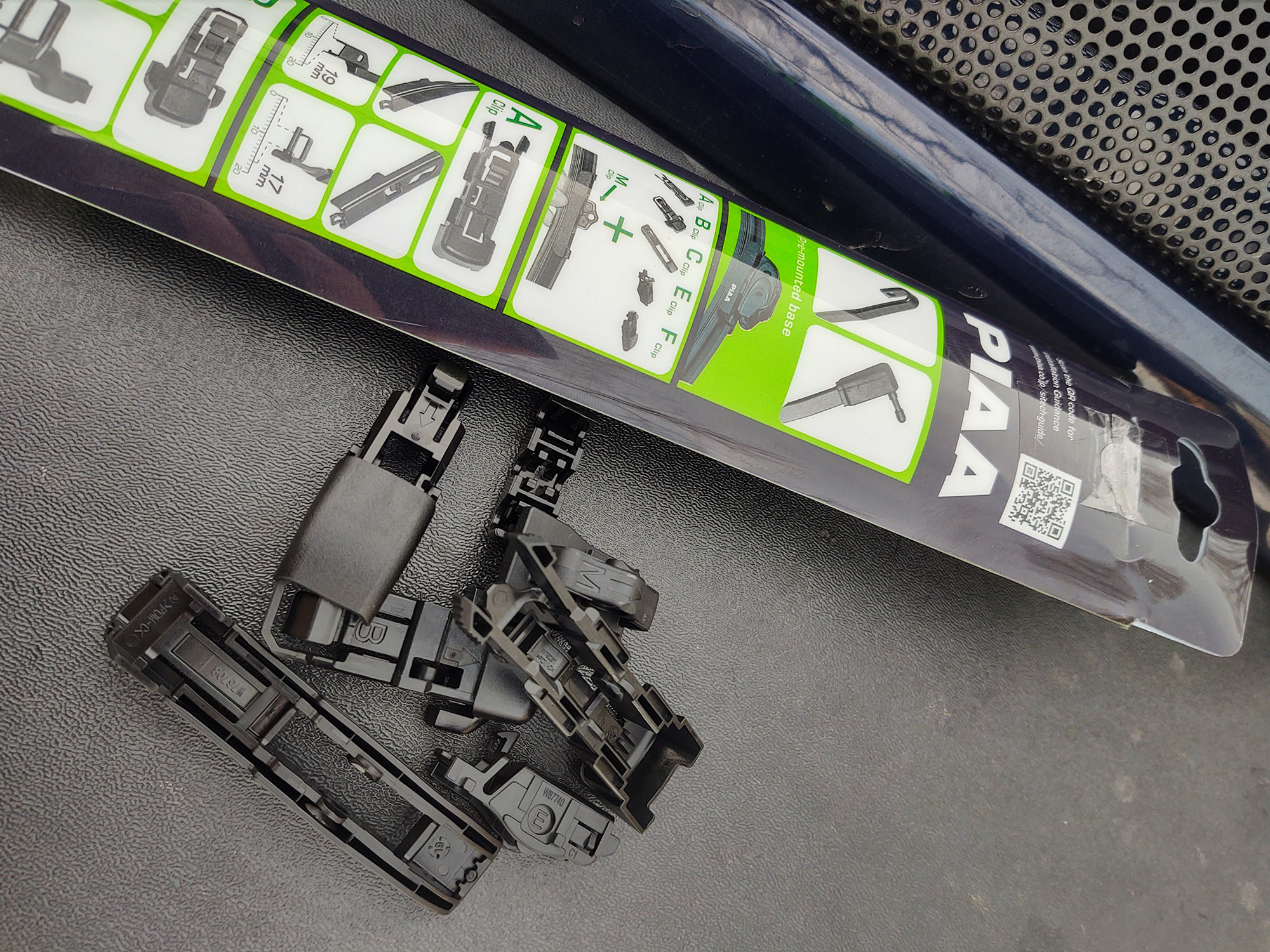
These wiper blades also come with a handful of plastic adapters for other applications, but the ones you need come pre-installed on the blade. Just simply snap off your old ones, and attach these as a replacement.
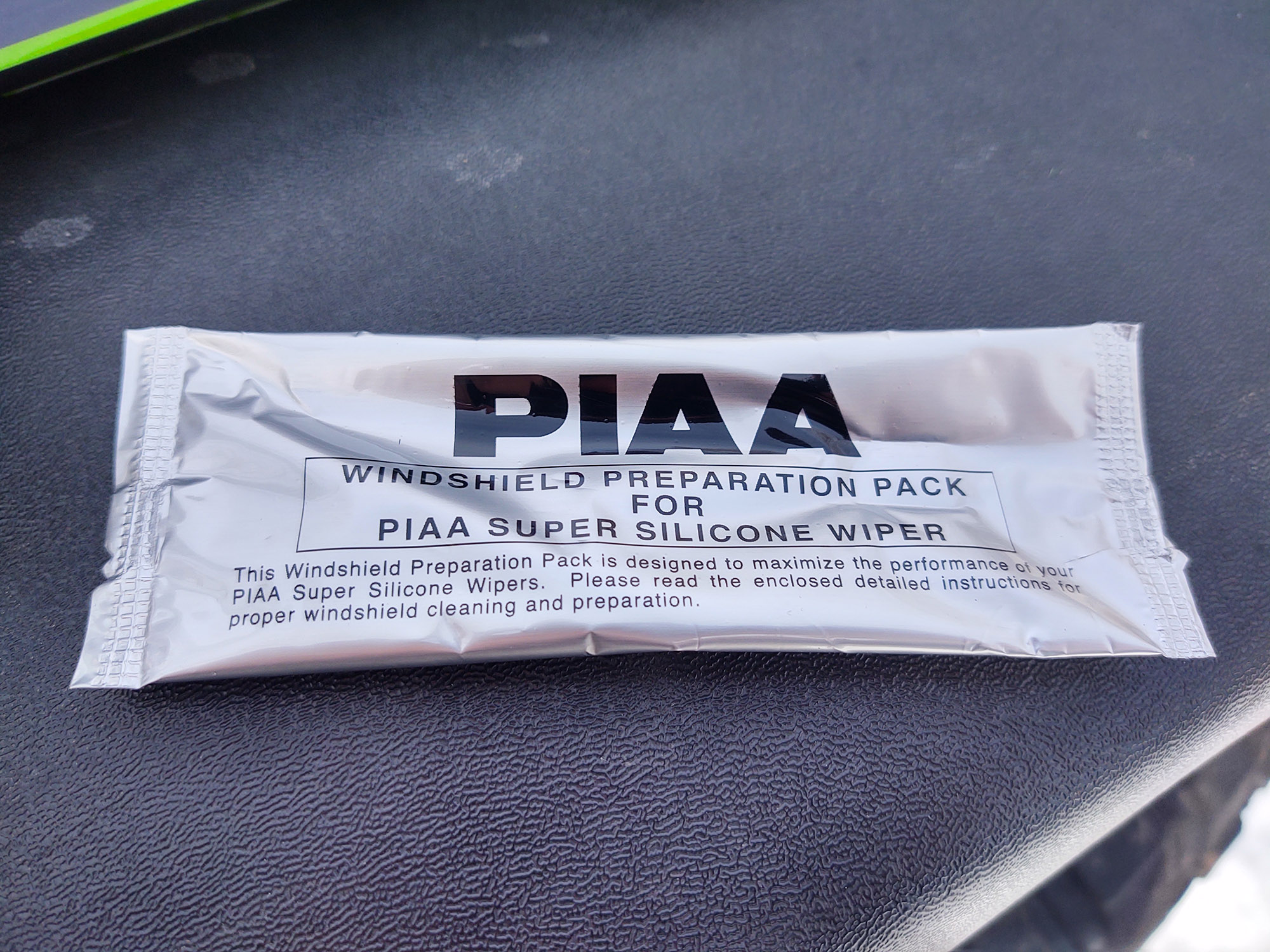
There is a small packet included with any of the silicone wipers PIAA offers called the Windshield Preparation Pack. Don’t skip this step. Before replacing your wipers, clean your windshield thoroughly with a glass cleaner and microfiber cloth. Once dry, use the Preparation Pack cloth to treat the glass according to the packet’s instructions.
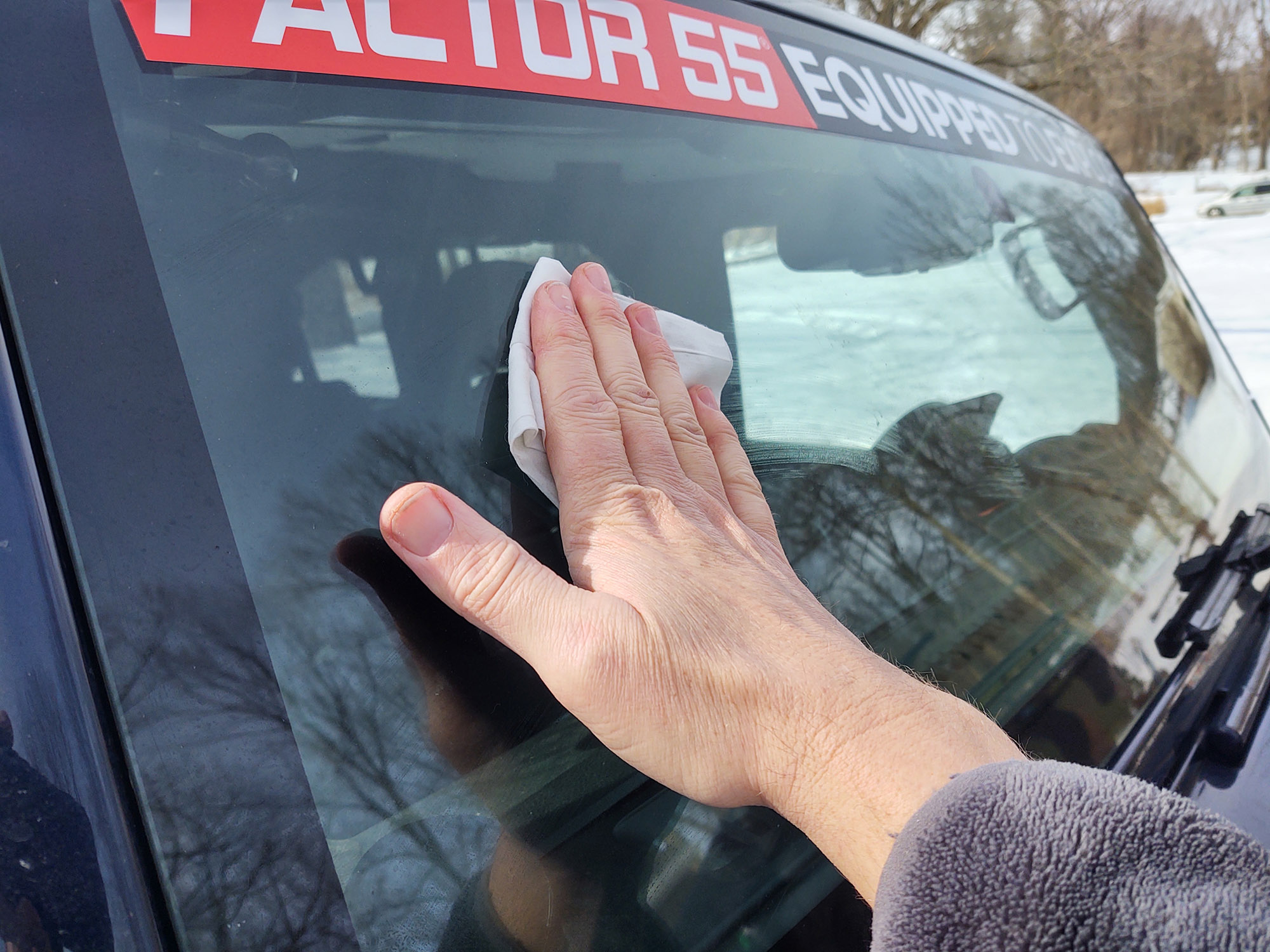
After that treatment dries, wipe the glass again with a damp cloth. By doing this before using your wipers the first time, it will make them perform flawlessly right out of the gate.
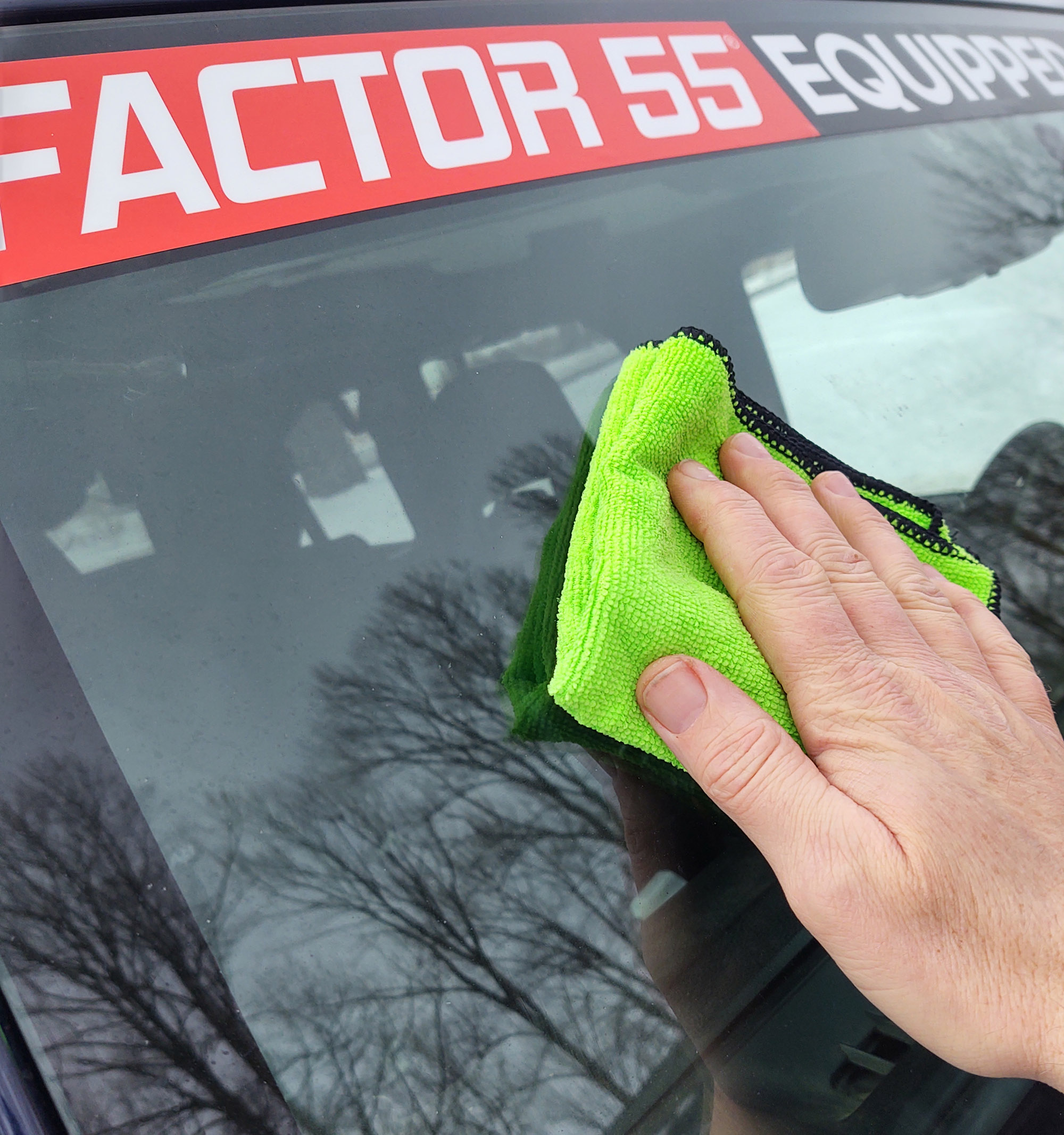
While I have only used these blades in one storm so far, they performed exactly how I expected they would, and with no chunky buildup.
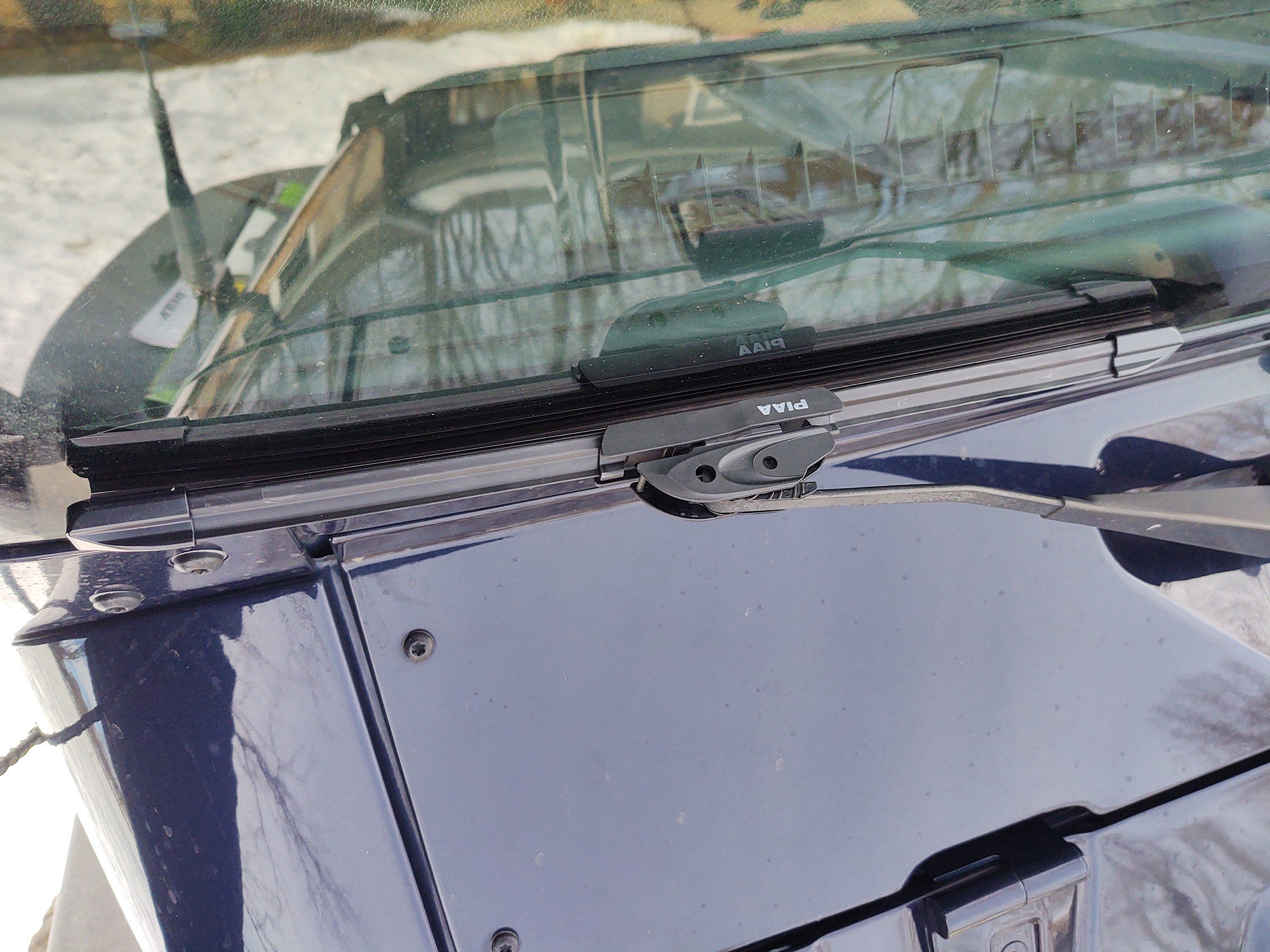
These PIAA Si-Tech Silicone Wiper Blades only cost about 10% more on average than the standard PIAA units, so if you live in a cold environment I urge you to consider them. Additionally, besides JK units, PIAA offers blades for most Jeep models in both of these styles.
Upgrade 3: Kleinn Air Horns HYDROblast Heated Windshield Washer System
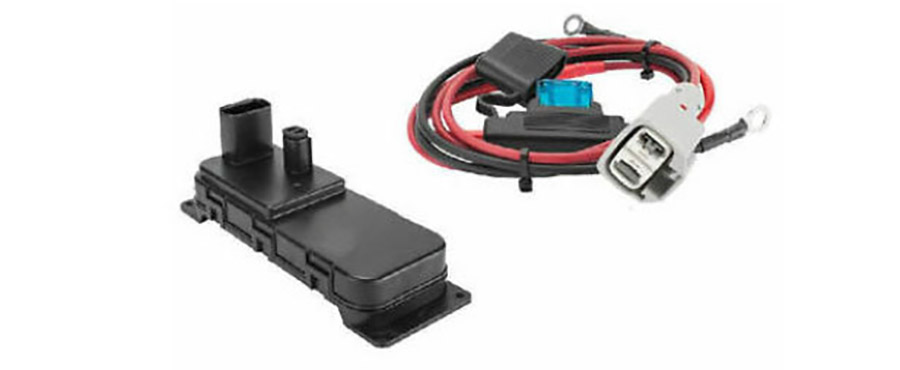
Okay, I’ll fully admit I was skeptical about this Kleinn Windshield Washer System at first and I did a bunch of research on it before installing. And what I found out, well, this little part is definitely worth it. Trust me.
Kleinn has recently expanded its bolt-on air horn and air compressor offerings, and also branched out into things like plug-and-play remote start kits for JK models as well as this little unit.
This windshield washer system is not “plug and play” exactly, but it is very close considering it is a universal product.
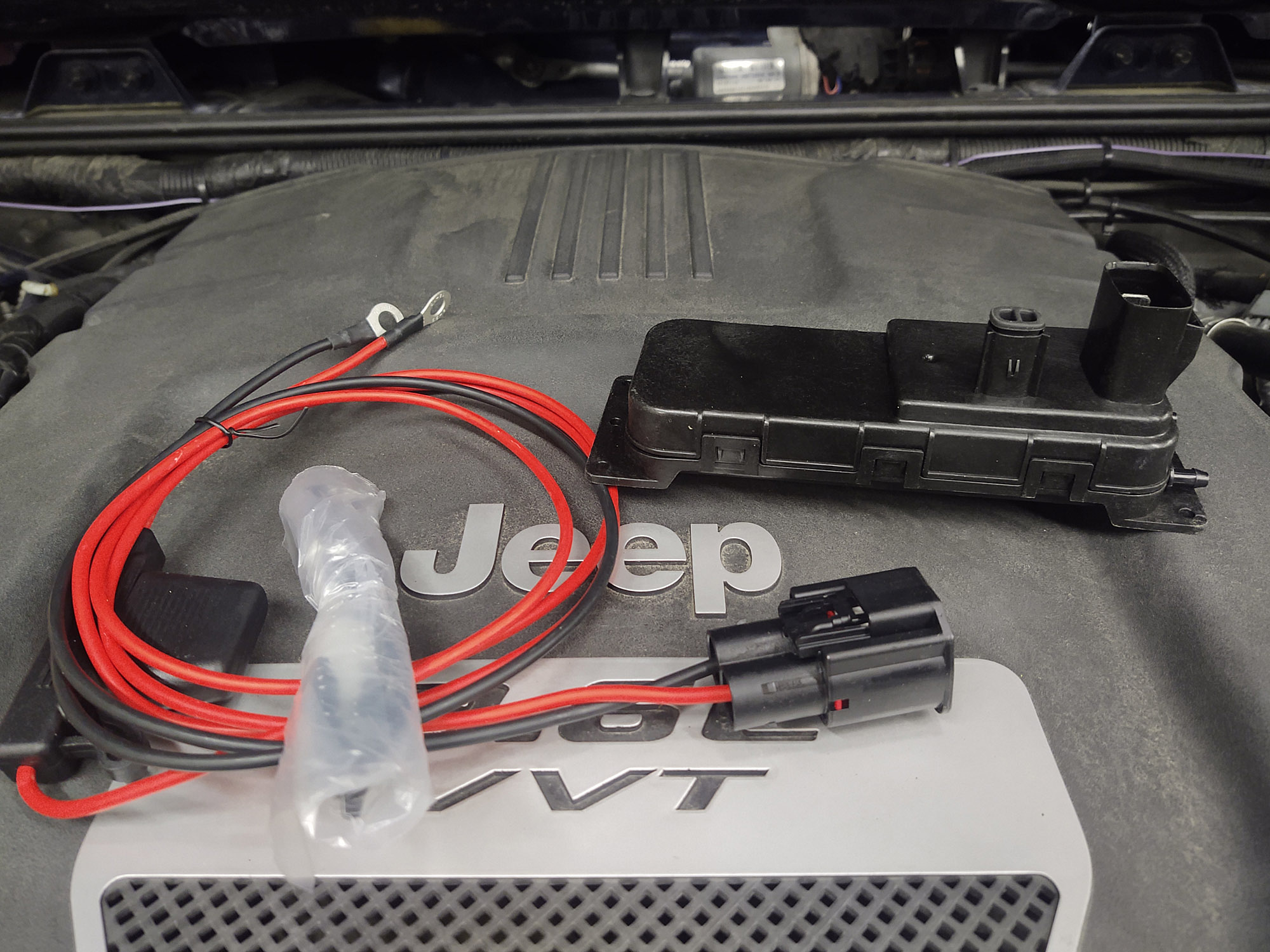
Included in the HYDROblast kit are the heater unit itself, a hardware pack and the wiring harness with fuse holder. One thing I noticed right away was the large gauge of wiring included in the harness. While I didn't measure, it appeared to be eight gauge which indicates it is a high-draw accessory. After checking, I did confirm it is eight gauge.
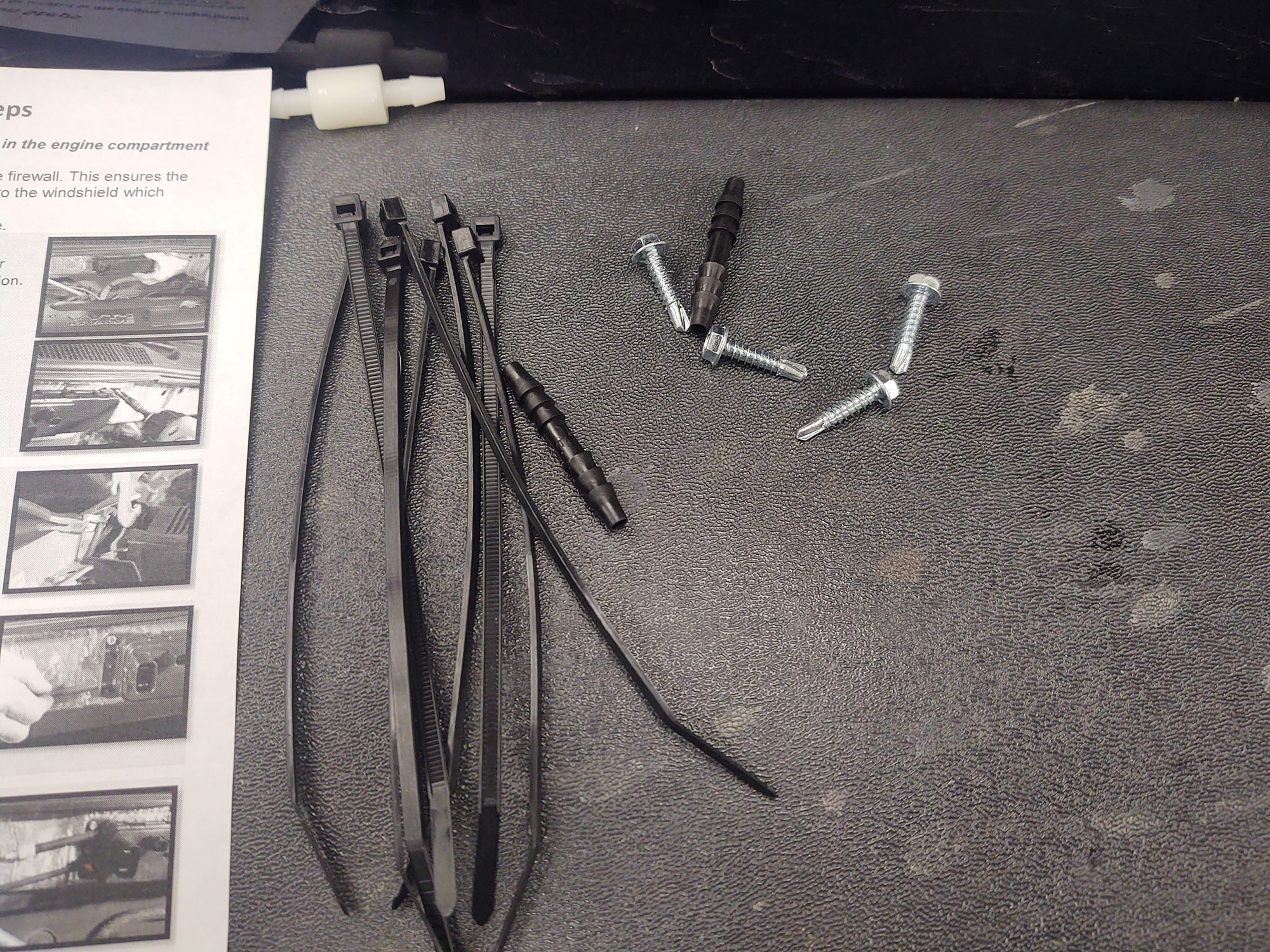
The bag parts kit includes several items: four self tapping screws, a handful of wire ties, two double barb fittings, a length of washer hose and a plastic check valve. Not everything was needed for my application.
As I said before, this is a universal product and can be used on almost any vehicle that is equipped with washer nozzles. Since my engine compartment is beginning to look like a science experiment, I wasn't able to find a fixed mounting position for this installation.
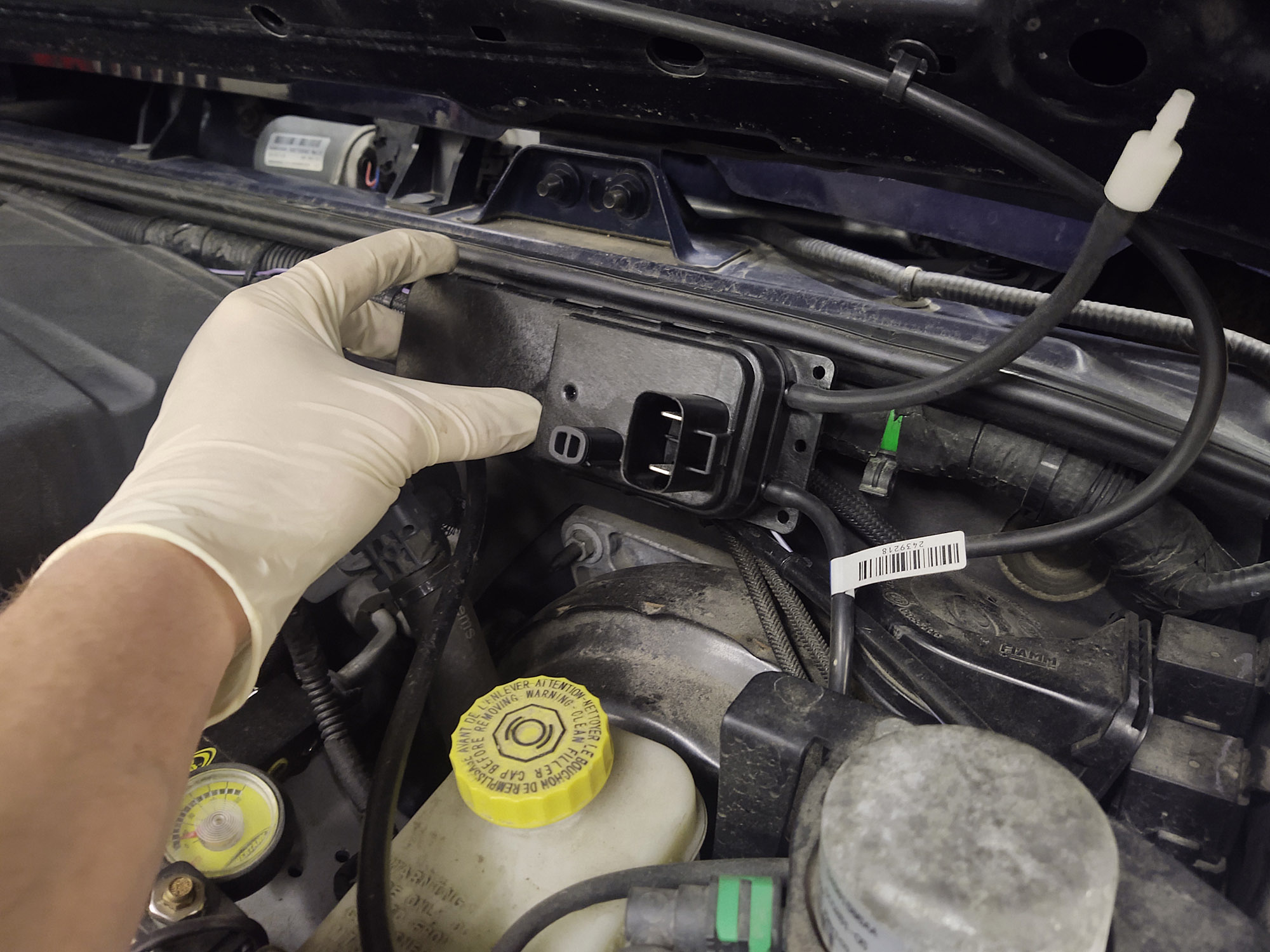
There are a few mounting tips in the instructions, and based on those I decided the firewall was the best place for mounting. Since my washer hose goes along the driver side of the engine compartment and up onto the hood near the brake booster, I decided to cable tie it to the main engine wiring harness loom.
All you need to do is interrupt the washer hose with the HYDROblast heater, adding a five inch long piece of washer hose in the plastic check valve on the nozzle side of the system.
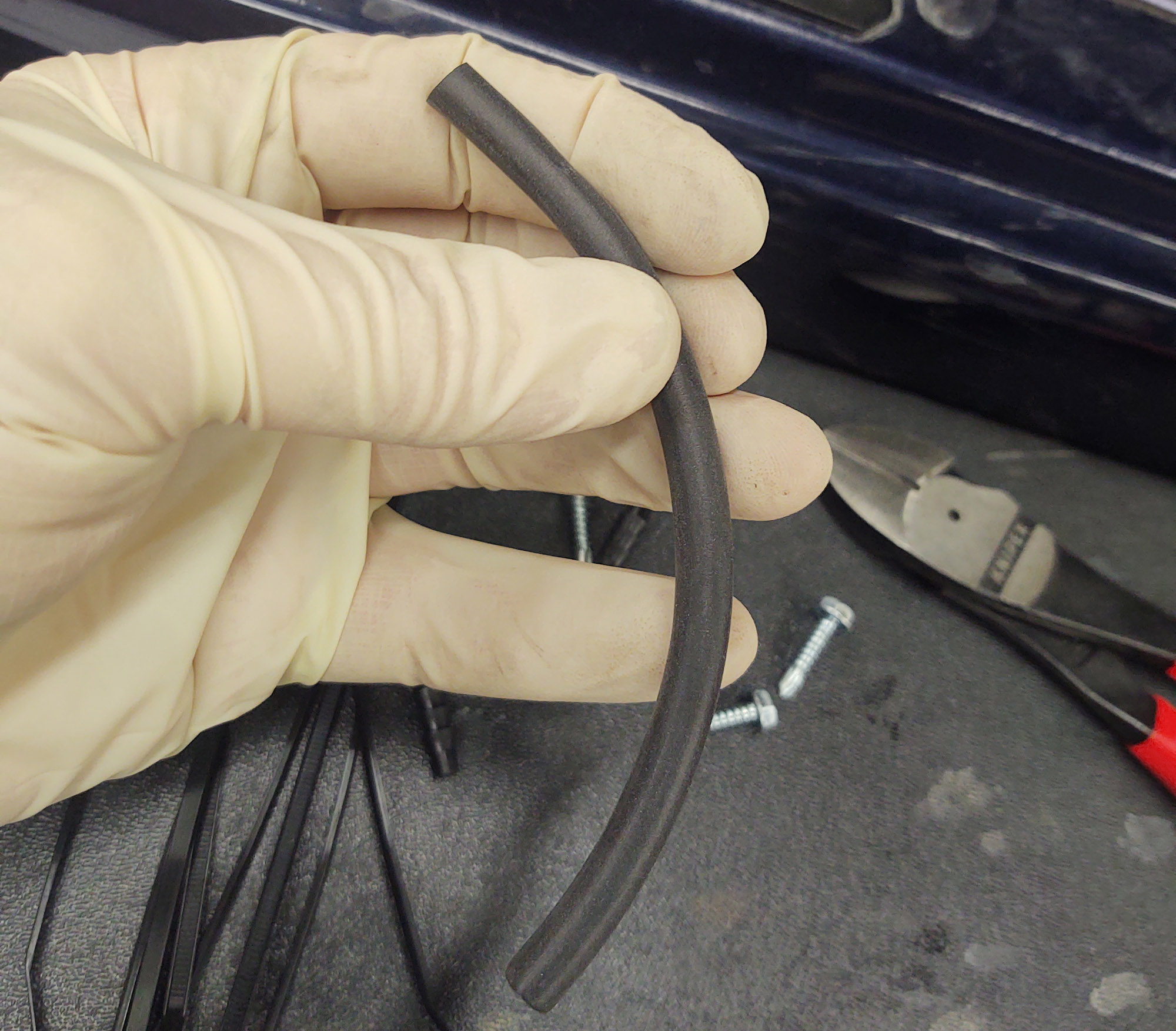
They do recommend you use the bottom barb for the inlet to prevent air bubbles from getting trapped in the heater unit.
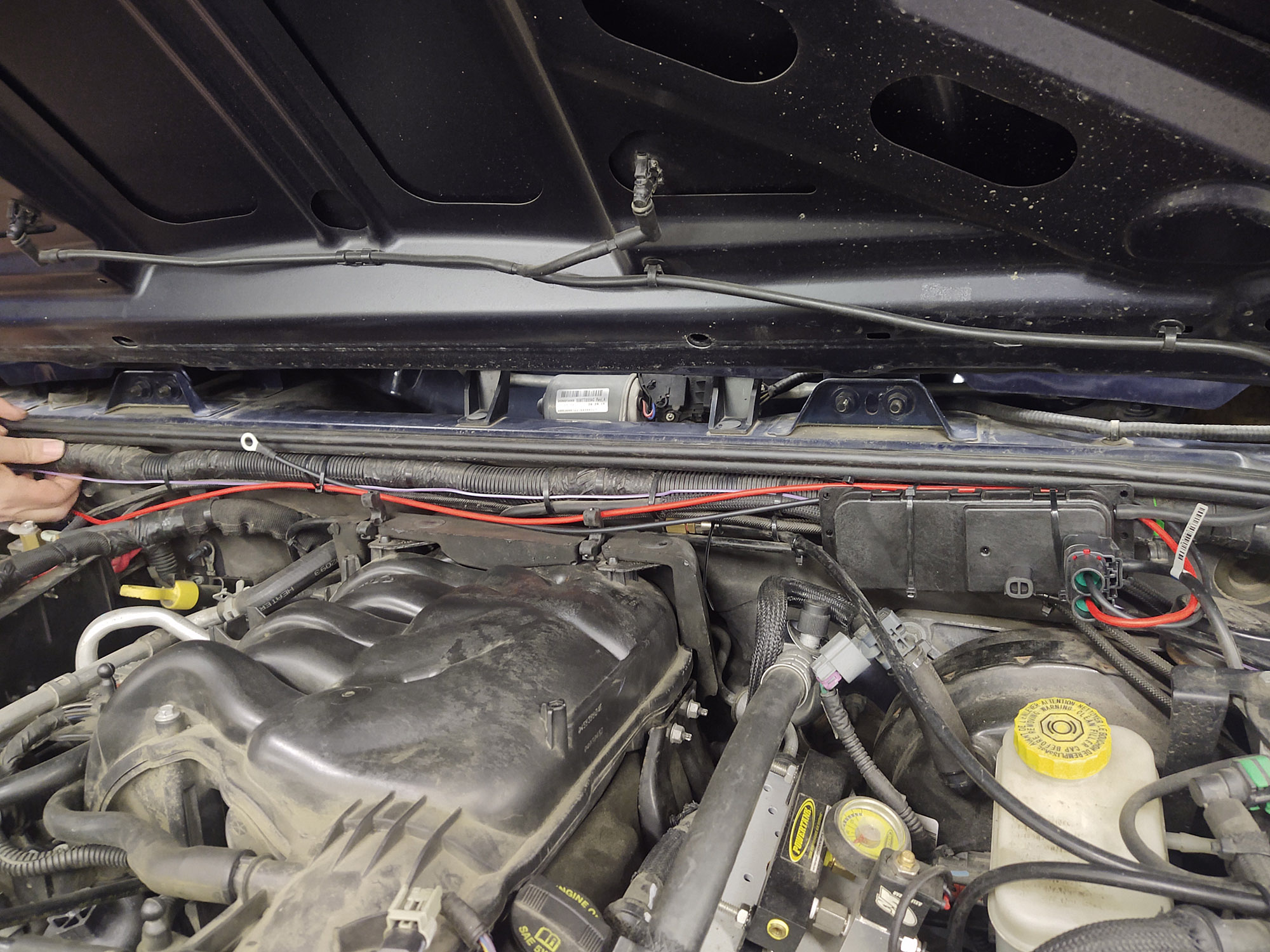
After that, the ring terminals need to be attached to power and ground — I attached them directly to the battery terminals. I did have to extend the ground side with a length of wire so it would reach the negative battery terminal, but it made sense because of the amount of electrical draw this item creates. More on that in a minute.
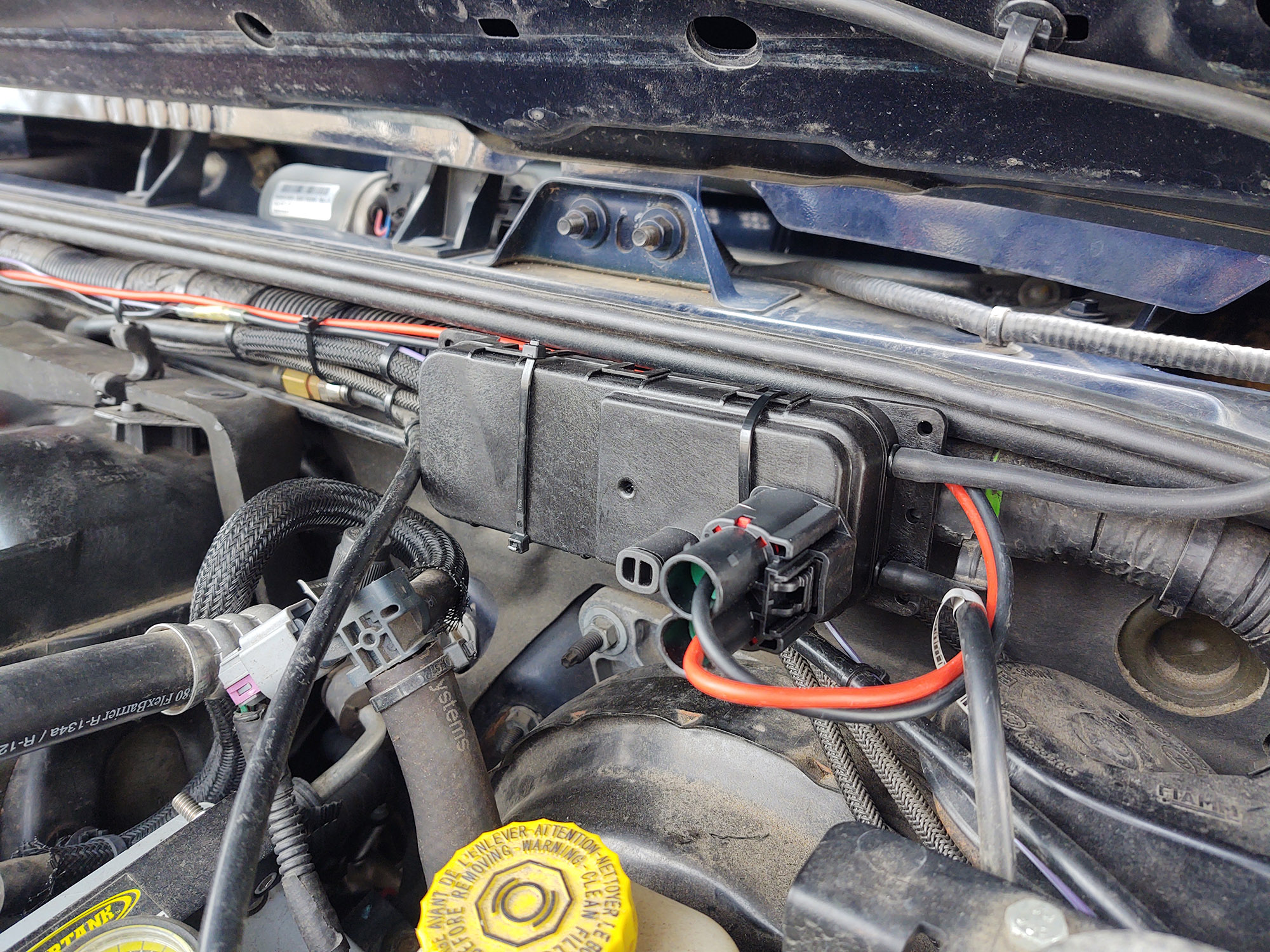
Now, with the unit installed, a few notes on how it works. There is no switch, because operation is automatic. And it does not stay on all the time, because it only kicks on when the battery voltage is over 13V DC. This means it can only operate with the engine running, so it will not drain your battery heating washer fluid while your vehicle is parked.
When operating, fluid inside the HYDROblast heater warms to 140°F. But by the time it makes it to the nozzles, it drops to around 115°F and then slightly less once it is atomized by your nozzles and it hits your glass. What does it do to ice coating your windshield? It melts it. Almost instantly. There is actual steam on the glass for several seconds.
I mentioned it was “high draw”; when heating up, this unit uses around 48 Amps for the first 50 seconds of operation as the element inside gets to full temperature. As I said, this won’t impact your battery life as it only works when the vehicle systems are drawing power from the alternator. Once it reaches temperature, it then only consumes about two A/h to maintain the supply fluid temperature at 140°F as long as you don’t use it.
Recommended spray duration is around three or four seconds, because after that the temperature drops when the heated fluid supply is exhausted. No worries though, as the unit gets another burst of full temperature fluid in about 20 seconds should you need more.
So yes, my initial impression is that this unit is absolutely worth the investment, especially considering its easy installation. While superb in the winter, Kleinn recommends using this product year-round, as the heated washer fluid makes short work of bird droppings and bugs — two things that are consistently the bane of any flat windshield vehicle’s existence.
Stay safe out there.
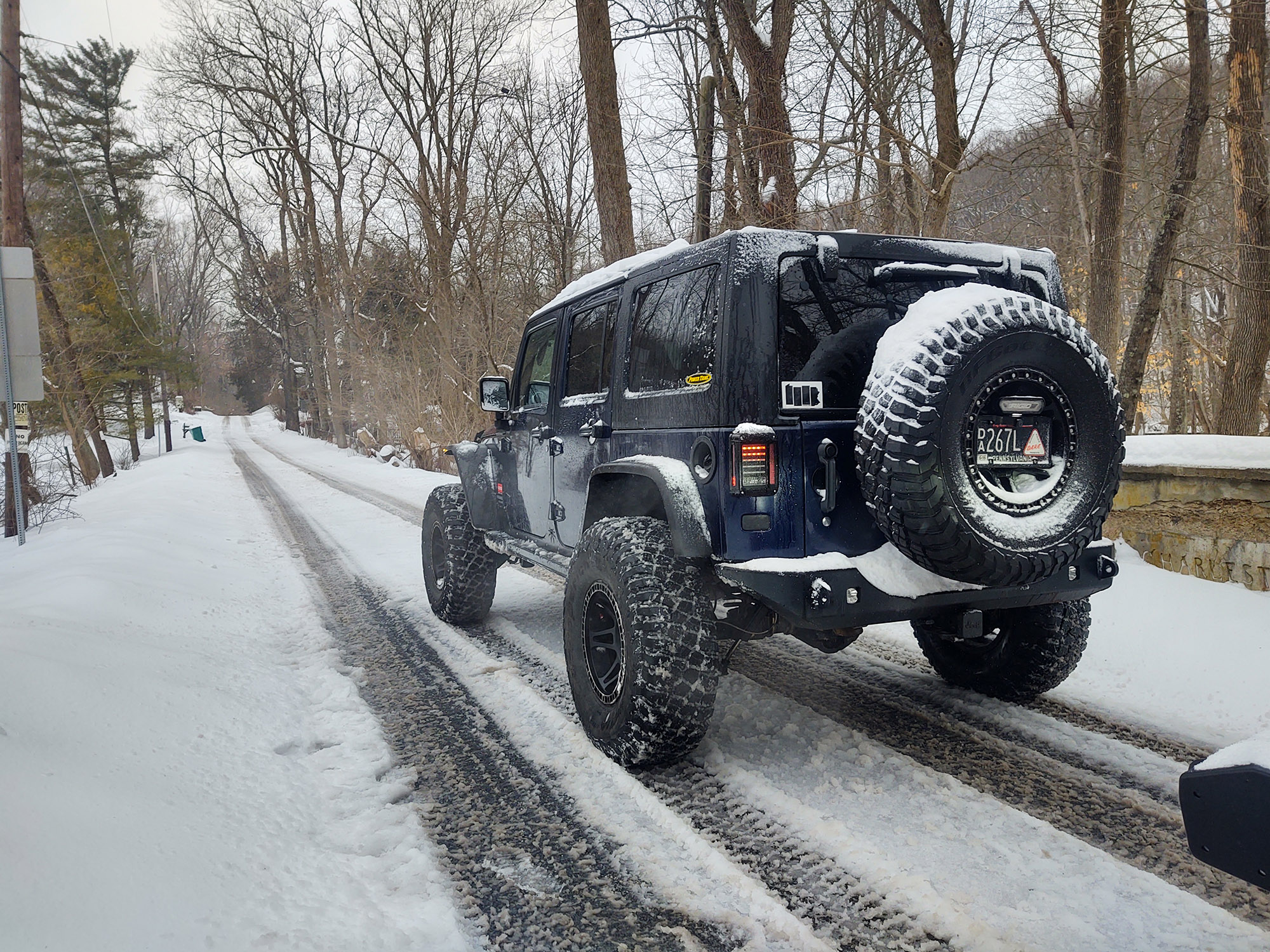
Related Articles:
How To Enjoy Jeep Winter Driving












